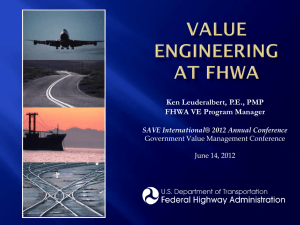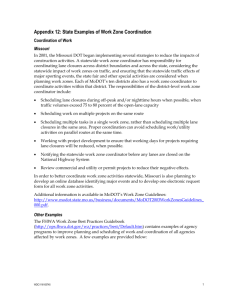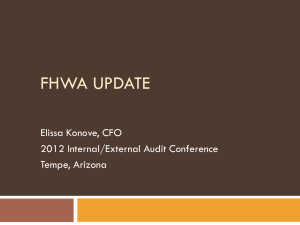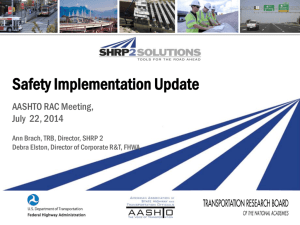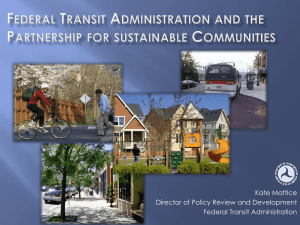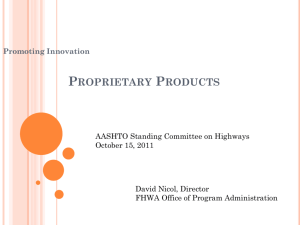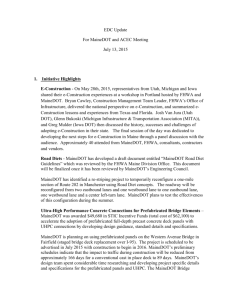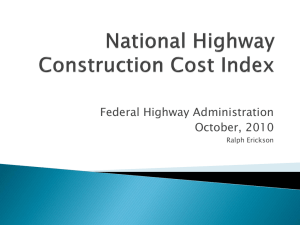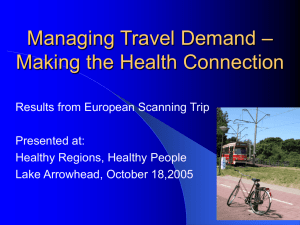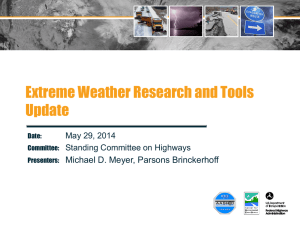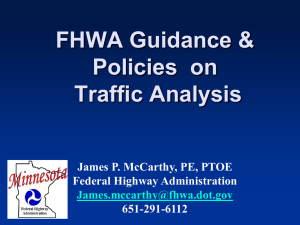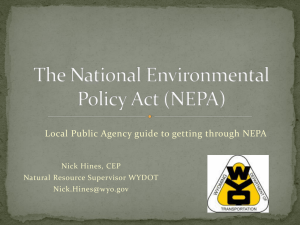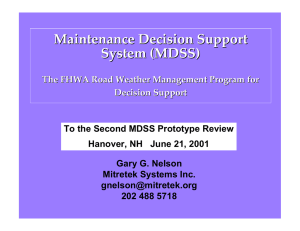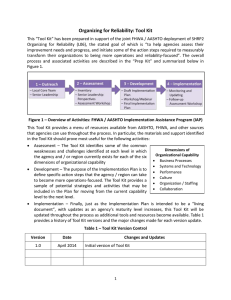How is Traffic Data Used for Funding Allocation?
advertisement
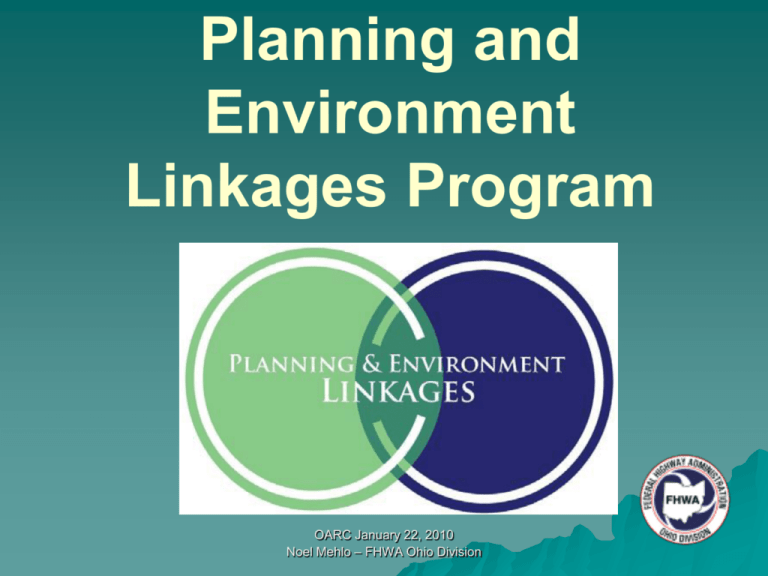
Planning and Environment Linkages Program OARC January 22, 2010 Noel Mehlo – FHWA Ohio Division FHWA has published A Guide to Measuring Progress in Linking Transportation Planning and Environmental Analysis to assist transportation agencies in developing their own programs to measure the successes of PEL-related activities. http://www.environment.fhwa.dot.gov/integ/meas_pr ogress.asp The Planning & Environment Linkage Program guide provides a framework for establishing measures that transportation agencies can utilize to develop their own measurement programs Integrated approach to transportation decision-making 23 CFR 450 and 318 encourages the integration of the information, products and decisions developed during transportation planning into the NEPA process including: These types of activities were supported by the changes in SAFETEA-LU 6001 and the subsequent update to the planning regulations that require consultation with resource agencies. FHWA, ODOT and the resource agencies are actively working on these efforts. How are transportation planning studies integrated into environmental and NEPA analysis? FHWA and FTA must be able to stand behind the overall soundness and credibility of analysis conducted and decisions made during the transportation planning process, which uses the "3-C planning principles, if these decisions are incorporated into a NEPA document, directly or by reference. Why link transportation planning to environmental processes? State and local agencies can achieve significant benefits by incorporating environmental and community values into transportation decisions early in planning and carrying these considerations through project development and delivery. Benefits include: Relationship Building Process Efficiencies On-the-ground Outcomes Performance Measures Performance Measures aim to answer questions about whether the performance of the transportation system (or economy, air quality, etc.) is getting better or worse over time; and whether transportation investments are correlated or linked to stated goals and outcomes. Performance Measures Examples cont. of performance measures or metrics could be based on or include: Accessibility Mobility Economic Development Quality of Life Safety Framework For Measuring Progress Step 1: Define program goals and objectives Step 2: Develop a set of metrics to demonstrate results toward reaching the defined goals and objectives Step 3: Assess baseline and develop targets Step 4: Measure and report results Why is this important ? The use of performance-based measures by transportation agencies is a growing trend that is expected to continue. While most of the traditional measures used by transportation agencies focus on system conditions or operations there has been little application to tracking the successes of integrated planning and environmental stewardship efforts Why is this important Establishing (cont.) ? metrics related to integrated planning and environmental stewardship will allow transportation agencies to demonstrate that they are committed to monitoring their progress in integrating environmental considerations throughout the transportation decision-making process. Conclusion This guide is intended to serve as a resource for transportation agencies interested in measuring their successes in integrating transportation planning and environmental analysis. Focus on the measures most relevant to your situation and needs. Use different types of measures. Use versatile data sources. Use versatile measures. Plan on making Planning and Environmental Linkages a routine part of how you do business. Questions?? Contact information FHWA Ohio Division: Marcus Wilner, Director of Program Development marcus.wilner@fhwa.dot.gov, (614) 280-6824 Dave Snyder, Environmental Program Manager dave.snyder@fhwa.dot.gov, (614) 280-6852 Frank Burkett, Senior Transportation Planner frank.burkett@fhwa.dot.gov, (614) 280-6838 Leigh Oesterling, Air Quality Specialist leigh.oesterling@fhwa.dot.gov, (614) 280-6837 Noel Mehlo, Transportation Planner noel.mehlo@fhwa.dot.gov, (614) 280-6841 For more information: The Transportation Planning Process: Key Issues A Briefing Book for Transportation Decision-makers, Officials, and Staff http://www.planning.dot.gov/documents/briefingbook/bbook.htm#9BB FHWA Planning and Environment Linkages: www.environment.fhwa.dot.gov/integ/index.asp#benefits FHWA: http://nepa.fhwa.dot.gov/ReNepa/ReNepa.nsf/home www.environment.fhwa.dot.gov/strmlng FTA: www.fta.dot.gov/planning/planning_environment_5222.html
